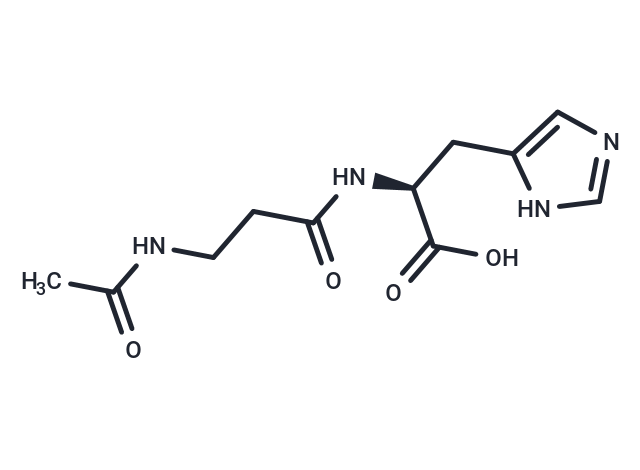Shopping Cart
Remove All Your shopping cart is currently empty
Your shopping cart is currently empty
N-Acetylcarnosine (N-Acetyl-L-carnosine) is thought to be able to combat some of the effects of oxidative stress as it has anti-oxidant properties.

| Pack Size | Price | USA Warehouse | Global Warehouse | Quantity |
|---|---|---|---|---|
| 1 g | $37 | In Stock | In Stock |
| Description | N-Acetylcarnosine (N-Acetyl-L-carnosine) is thought to be able to combat some of the effects of oxidative stress as it has anti-oxidant properties. |
| In vivo | Formulation A, containing 1% N-Acetylcarnosine, is administered in an 80 μL volume to the right eyes of male grey chinchilla rabbits (aged 3-4 months, weighing 2-3 k). This N-Acetylcarnosine prodrug in eye drop form is designed to enhance clinical outcomes for ophthalmic conditions, specifically aiding in the prevention and reversal of cataracts in both human and animal eyes [1]. |
| Synonyms | N-Acetyl-L-carnosine |
| Molecular Weight | 268.27 |
| Formula | C11H16N4O4 |
| Cas No. | 56353-15-2 |
| Smiles | CC(=O)NCCC(=O)N[C@@H](Cc1cnc[nH]1)C(O)=O |
| Relative Density. | 1.343 g/cm3 |
| Storage | store at low temperature,keep away from moisture,keep away from direct sunlight | Powder: -20°C for 3 years | In solvent: -80°C for 1 year | Shipping with blue ice/Shipping at ambient temperature. | |||||||||||||||||||||||||||||||||||
| Solubility Information | H2O: 250 mg/mL (931.9 mM), Sonication is recommended. | |||||||||||||||||||||||||||||||||||
Solution Preparation Table | ||||||||||||||||||||||||||||||||||||
H2O
| ||||||||||||||||||||||||||||||||||||
| Size | Quantity | Unit Price | Amount | Operation |
|---|

Copyright © 2015-2025 TargetMol Chemicals Inc. All Rights Reserved.